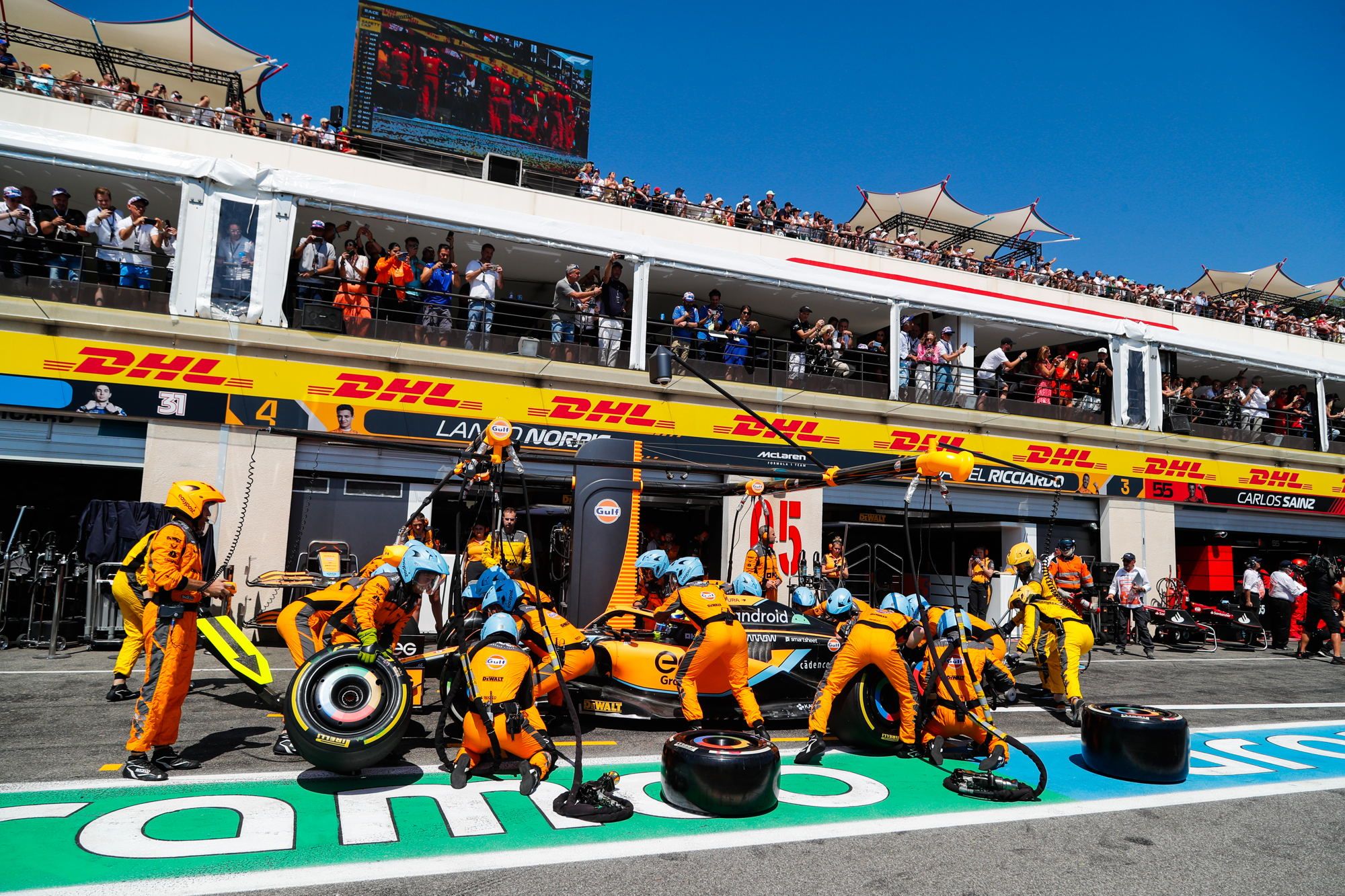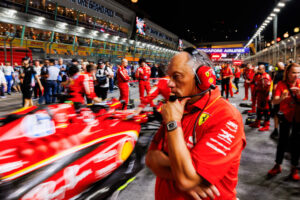As F1 continues its growth as a global sport how can the series maintain that momentum? More teams or a better balance?
Last week F1 announced the 24-race schedule for the 2023 calendar. With more countries lining up to join future schedules, there is only so far that Formula One can expand in that aspect. TV ratings, race weekend attendance, and sponsorship could continue its upward trend. But how should the series grow on the track?
Certainly, there is interest in creating new teams. Andretti Autosport has expressed their desire to form a new team, Audi is entering as a supplier in 2026, and Porsche nearly joined up with Red Bull. And despite pushback from F1 and certain Team Principles, Mario Andretti recently said in an interview, “We’re working every single day on this project, with the intention to be on the grid in 2024.” F1’s CEO, Stefano Domenicali, is clear in his words that he does not believe F1 needs to expand beyond ten teams right now.
Does F1 need more teams, and with it more drivers? Or is it more important to continue to modify the regulations in order to bring the front and the back of the grid closer? We asked the LWOS Motorsport staff for their thoughts.
Arturo
The competitive balance needs to be properly balanced as we have the continuation over the past few seasons with the same drivers and teams either winning or on the podium. Having more balance throughout the sport would better showcase the drivers’ skills. The majority of their departures from the sport come from the cars lacking performance on the track. Fans want to tune in every race and expect a shootout for a win between multiple drivers and multiple teams. A perfect example is from Silverstone this season and the battle for the final spots on the podium. That is the level of competitiveness I want to see. It will bring in more fans, and the excitement level will keep on rising.
Fatima
The competitive balance needs to be improved as it grows tedious watching the same few drivers win or get on the podium – unless it’s Lewis Hamilton. They need to balance it out so fans can go into each weekend not knowing what to expect, kind of like how it goes in the lower categories.
Gabe
Jack
Despite changes to regulations and budget caps, F1 has always struggled to solve the issue of making it a more level playing field. Whether it was teams in my childhood years like Minardi, or Haas today, and many in the in-between years, we see the lower teams encounter the hardships of finding results. One reminisces fondly of the 1990s when you had multiple teams who were adored by many anoraks, therefore I’d happily welcome an extra team to the party. Andretti are talking a good game, so let’s find out if they can make good of their word. Maybe Audi or Porsche would like to up their game and enter as a works team as well as powering others? Bring it on, I say, and welcome!!
Nathan
It’s an interesting dilemma. Adding teams will open up new spots for drivers, create new battles on the grid, and more storylines. Yara raises a good point (below) that 24 F1 cars on certain tracks might prove too much, such as Monaco. News teams should only be considered if F1 can guarantee they will be competitive. At least in the mix for a spot in the middle of the pack. What F1 doesn’t need is four more cars always at the back just to increase potential sponsorships. And the reason that is unknown is that currently, F1 can’t provide that for the back of the grid.
Until F1 can find a way to continue to give teams freedom for independence and development, while also ensuring that the gap from 1st to 20th isn’t insurmountable. At the moment we know that the Williams or the Haas car has zero chance of not only beating the Red Bull but even getting close to it. Now I’m not saying F1 needs 20 identical cars out there, but it would be nice to see the cars within a second of each other and more emphasis on the driver and the setup. Focus on the current competitiveness and eventually entertain an 11th or 12th team.
Thomas
Let’s start with Toto Wolff’s recent quotes:
“(The Formula One Grid) has 10 entries today, (the Formula One teams) divide the prize fund among those 10 entries. We have invested considerable amounts over the last 10 years. I mean, each of the organizations that are sitting here on the podium has probably put more than a billion into the Formula 1 projects over the years, so it needs to be accretive. If a team comes in, how can you demonstrate that you’re bringing in more money than it’s actually costing: because the 11th team means a 10 percent dilution for everybody else.”
Toto Wolff is not wrong. Any business must be responsible and not sell themselves short. That said, how can any new potential Formula One franchise showcase a chance to prove oneself? Wolff’s sentiments recall when Michael Andretti pulled back on expanding Andretti Autosport into stock car racing. After Dodge pulled out of NASCAR, it wasn’t a move Andretti could move forward with in confidence.
It is ironic because if any team can properly showcase why they deserve the opportunity to compete in the world’s premier level of motorsport, it’s Andretti! The caliber of success that Andretti Autosport has showcased as a franchise across six different motorsport disciplines is spectacular and worthy of consideration. In this case, how can the Andretti franchise prove itself capable of advancing from a continental great to a global powerhouse? Toto Wolff said about the possibilities of a full-fledged American team similar to Andretti Autosport joining the Formula One grid:
“So many things have been said around an American entry…on the pluses. I’m sure that if we have a true American team, with an American driver, that would be very beneficial.”
It’s easy to formally submit paperwork to apply, yet unlike in other competitions, in Formula One, the field is set for the entire season. A potential franchise would need to take an extra step to prove itself worthy of competitive acceptance. One that showcases that they are not out there simply to be out there. A formal testing session. One in which all ten Formula One Team Principals and the FIA Board of Directors all attend. Here, if the team provides a series of averages based on speed and time over an undisclosed number of laps, the viewing parties could then discuss their observations and conduct a final vote for acceptance onto the grid.
Expansion + Competitive Balance. It’s what will prove potential franchises worthy of acceptance in the mannerisms that Toto Wolff described.
Yara
Adding more teams to the grid might or might not make the sport more competitive. It depends on the quality of the new teams. Four extra seats would be available for new drivers entering F1, which would provide more landing places for drivers such as Daniel Ricciardo. Of course, the idea of having 12 teams, 24 drivers, and 24 cars will add more action on the track, but the question is, will this be enough to watch real racing? Although FIA regulations allow a limit of 26 cars, I imagine if Formula 1 reached that ceiling, racing would become quite hard, especially on circuits with tight spaces.
So, will adding more teams put some iconic circuits such as Monaco at risk of being replaced by new ones with more space? Or will F1 implement a new elimination format maybe for the race itself so that drivers would still have room to race? In both cases, I think this isn’t what Formula 1 needs right now. Instead, improving the competitive balance and ensuring the current grid is as competitive as possible makes way more sense. The sport would be far more interesting and entertaining to watch if we went into each race week not knowing who would win, what the podium would look like, and even who would make it into the top 10.
Those are the thoughts from the LWOS Motorsport staff. Now give us your thoughts in the comment section below. What is more important for the growth of F1 over the next five years? Expanding the number of teams and drivers or improving the competitive balance between the existing ten teams?






